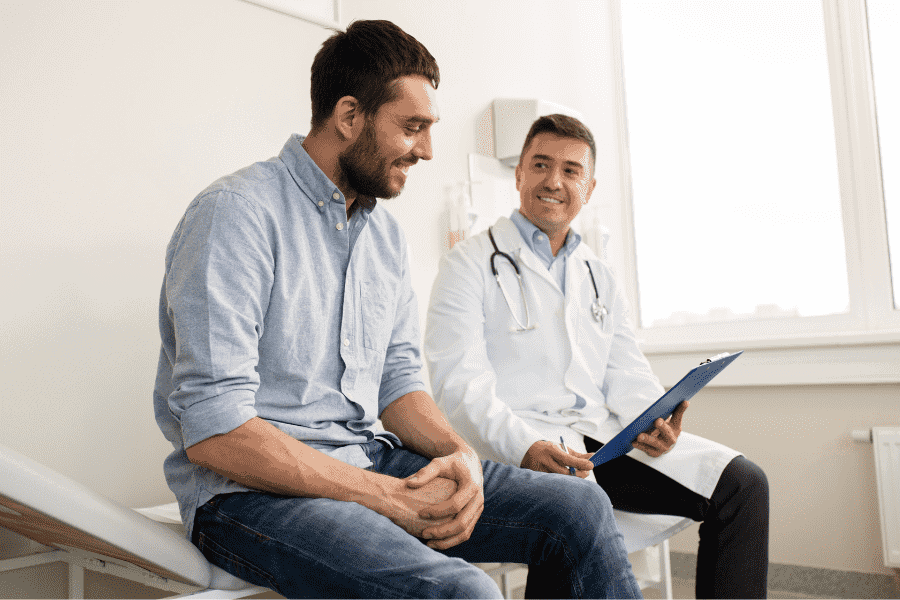What is an Endoscopy?
 Endoscopy is a minimally-invasive, nonsurgical procedure used to examine a person’s digestive tract, an internal organ, or other tissue in detail. It can also be used to carry out different tasks, including imaging and minor surgery.
Endoscopy is a minimally-invasive, nonsurgical procedure used to examine a person’s digestive tract, an internal organ, or other tissue in detail. It can also be used to carry out different tasks, including imaging and minor surgery.
The procedure employs an endoscope, a flexible fiber-optic tube with a tiny TV camera at the end. The camera is connected to an eyepiece for direct viewing that displays the images on a color TV. The endoscope allows for the effective diagnosis of gastrointestinal (GI) disease.
Because modern endoscopy has relatively few risks, delivers detailed images, and is quick to execute, it has proven extremely useful in many areas of medicine. More than 75 million endoscopies are performed each year in the U.S.
Our team generally focuses on diagnostic upper GI endoscopy (EGD) and colonoscopy.
Upper GI Endoscopy (EGD)
An upper GI endoscopy or EGD (esophagogastroduodenoscopy) is a procedure that allows your doctor to diagnose problems in your upper GI (gastrointestinal) tract. The upper GI tract includes your food pipe (esophagus), stomach, and the first part of your small intestine (the duodenum).
An EGD is done using an endoscope with a tiny light and video camera on one end. The tube is inserted into your mouth and throat and slowly pushed through your esophagus, stomach, and duodenum. Video images from the tube are seen on a monitor. EGD is an outpatient procedure, meaning you can go home that same day. It takes approximately 5-20 minutes to perform.
Small tools may also be inserted into the endoscope. These tools can be used to:
- Take tissue samples for a biopsy
- Remove food or other materials that may be stuck in the upper GI tract
- Inject air or fluid
- Stop bleeding
 An upper GI endoscopy may also be performed to investigate symptoms of:
An upper GI endoscopy may also be performed to investigate symptoms of:
- Stomach pain
- Difficulty swallowing
- Protracted nausea and vomiting
- Heartburn
- Unexplained weight loss
- Anemia
- Bleeding in the upper GI tract or bowel movements
Moreover, an upper GI endoscopy can be used to identify conditions such as:
- GERD (gastroesophageal reflux disease)
- Narrowing (strictures) or blockages
- Larger than normal veins in the esophagus
- Redness, inflammation, and sores (ulcers)
- Tumors, either cancerous (malignant) or not cancerous (benign)
- Crohn’s disease
- Infections
Our surgical team specializes in minimally invasive EGD to diagnose many gastric conditions and diseases. Our providers’ specialty training has allowed them to perform this procedure with excellent outcomes and low risks of complications.
Colonoscopy
A colonoscopy is a diagnostic test that lets your doctor look at the interior lining of your large intestine (your colon and rectum) through a thin, flexible viewing instrument called a colonoscope. A colonoscopy allows your doctor to establish the presence of:
- Polyps
- Cancer
- Diverticulitis
- Colitis and other colonic conditions
 A colonoscopy can be used as a screening test to identify and remove precancerous growths in the colon or rectum.
A colonoscopy can be used as a screening test to identify and remove precancerous growths in the colon or rectum.
Your doctor will perform a colonoscopy to:
- Examine the intestinal canal for problems and to help determine potential causes of abdominal pain, rectal bleeding, chronic constipation, and persistent diarrhea
- Screen for polyps (tissue growths in the colon) and colon cancer
- Detect and remove any polyps in patients that have had prior polyps to reduce the risk of colon cancer
- Investigate the cause of iron deficiency anemia (a low blood count stemming from the loss of iron)
During a colonoscopy, your doctor will insert a colonoscope into your rectum and up through the large intestine. The flexible, lighted device will allow your physician to view the full lining of the colon and to identify and remove any polyps. If needed, tissue samples can be obtained for analysis and biopsy.
A colonoscopy can often facilitate the effective treatment of colorectal issues and allow the patient to avoid major surgery.
A colonoscopy takes 30 minutes. However, additional time may be required for some patients, to carefully remove or sample, polyps or lesions found during the examination.
To learn more about the types of minimally invasive and endoscopic procedures we offer or to obtain a second opinion regarding a minimally invasive technique, please feel free to contact us.
Testimonials


Drag vertical bar, horizontally, to show before and after photos.


Sign Up for Our Newsletter to Get the Latest Updates
Sign Up for Our Newsletter to Get the Latest Updates
Oviedo/Winter Springs
(Inside Medical Office Building)
8400 Red Bug Lake Road
Suite 2090
Oviedo, FL 32765
Sanford Office
2100 West 1st Street
Sanford, FL 32771
Hospital Privileges at AdventHealth, HCA Lake Monroe Hospital, Orlando Health, Oviedo Medical Center, and UCF Lake Nona Hospital

